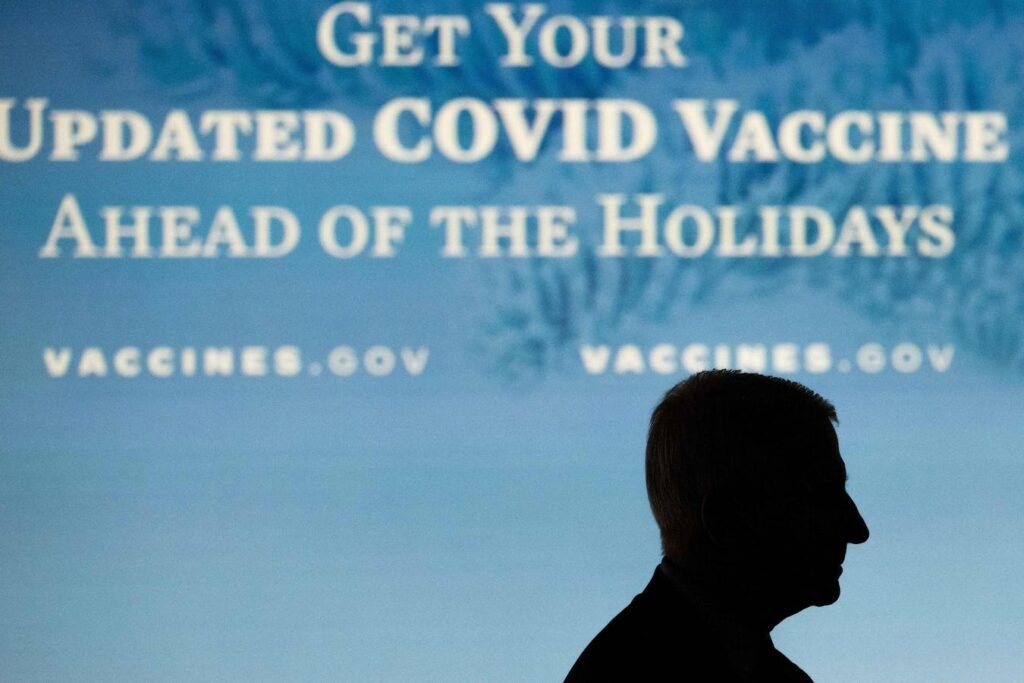The importance of getting the latest coronavirus vaccine this holiday season, especially for Americans (+) 50 and older. (Photo by SAUL LOEB/AFP) (Photo by SAUL LOEB/AFP via Getty Images)
AFP (via Getty Images)
The Centers for Disease Control and Prevention has released new recommendations for COVID-19 vaccination doses. No wonder they recommended second doses to people over 65 or younger people who are moderately or severely immunocompromised. One dose of the 2024-2025 novel coronavirus disease (COVID-19) vaccine is recommended for people ages 5 to 64.
A positive but somewhat unexpected observation was that “for moderately or severely immunocompromised patients, there should be flexibility in administering additional doses (i.e., 3 or more doses) in consultation with their health care provider.” It recommended a strategy known as clinical decision-making. The Advisory Committee on Immunization Practices was discussing such an approach last summer. Some argue that a standard, universal approach is easier to understand for patients and health care providers. Some argued for a shift to a risk-based strategy.
There was a significant push from the public to make these changes and encourage people to get vaccinated every six months instead of every year. Many people called for immunocompromised people to be allowed to receive a second coronavirus vaccine shot two months after the first one.
Over the past four-and-a-half years, we’ve learned that COVID-19 is not seasonal like influenza, and waves of infection occur year-round. That is why it makes no sense to suggest only getting vaccinated in combination with the influenza vaccine every autumn.
One problem is that even when vaccines are available, uptake is inadequate. In 2023-2024, only 22.5% of adults and 14.1% of children were vaccinated. Less than 9% of adults 65 and older have received at least two doses of the 2023-24 COVID-19 vaccine.
Uptake has definitely declined since the CDC’s Bridge Access program ended in August. Since then, the cost of COVID-19 vaccines for the uninsured has been withheld from the government and shifted to individuals who cannot afford to pay.
There is also ample evidence that the effectiveness of vaccines against hospitalization for people over 65 declines significantly after four to six months. From 2023 to 2024, the VE for hospitalizations of immunocompromised patients further decreased, reaching 0 in approximately 4 to 6 months (p. 17).
Vaccine effectiveness over time. … (+) https://www.cdc.gov/acip/downloads/slides-2024-10-23-24/04-COVID-Link-Gelles-508.pdf
CDC
One question is what criteria Medicare/Medicaid or private insurance companies must meet to cover extra doses for immunocompromised patients. If a patient needs additional doses but does not meet the criteria, can they pay out of pocket?If someone is trying to protect a family member at risk, they should be able to pay for 3 to 4 doses per year. Can I get it?
Another interesting recommendation by ACIP is to use vaccines from the same manufacturer (homologous vaccines). This was surprising since some early studies considered a combined (heterogeneous) approach advantageous. For example, the FDA noted that xenogeneic boosters produced serologic responses comparable to or better than homogeneous boosters.
Why does the CDC now recommend sticking with the same manufacturer?
Eric Topol, Ph.D., founder of the Scripps Research Translational Institute, said this is likely due to the wide variability in response to combination strategies (neutralizing antibodies and T cells), but that clinical outcomes remain He said this is because there are no studies showing a clear difference. . Other experts hypothesized that this is because vaccines from different manufacturers target different strains of the virus. Novavax is most potent against the JN.1 strain, but the mRNA vaccine targets the FLiRT variant.
The CDC has not responded to specific and detailed questions about these issues. It is welcome news that the flexibility to allow more frequent vaccinations will further protect immunocompromised patients. But the devil is in the details when it comes to how this actually works, or if it actually works. . Looks like we’ll have to wait for further clarification.

